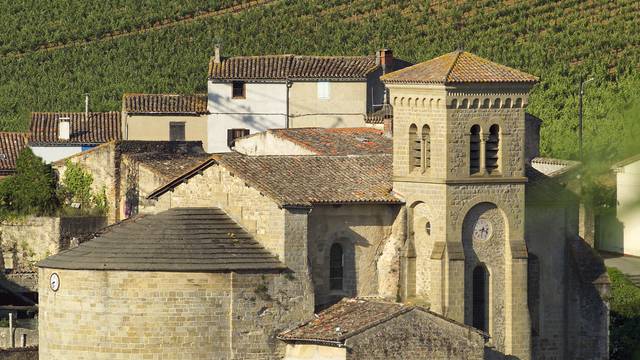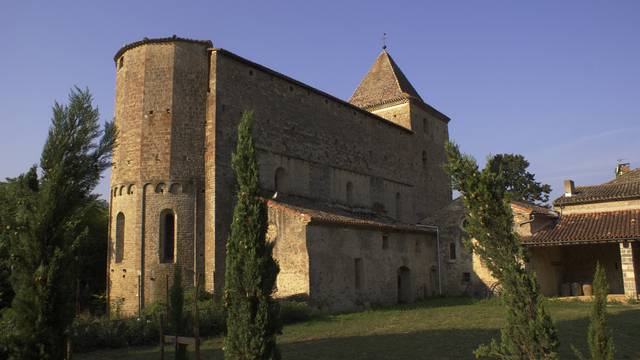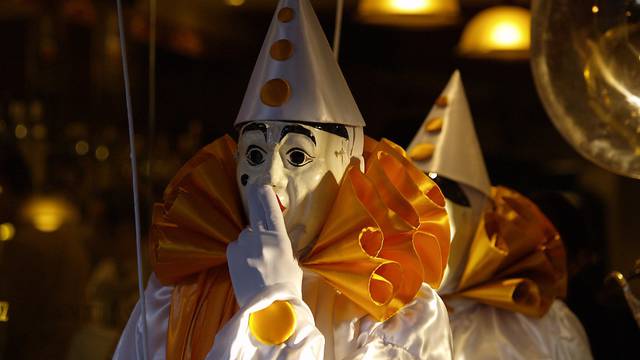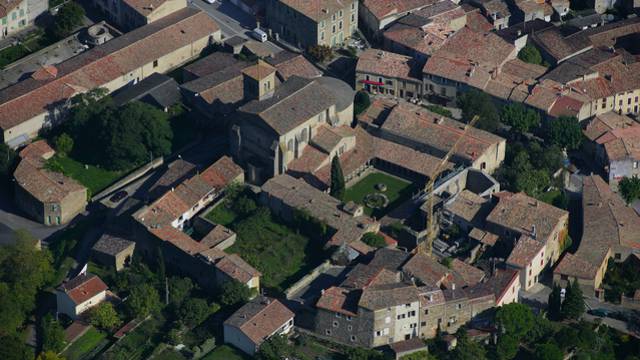HISTORY
Louis the Pious singled out the Abbey in the 9th century: he gave it a major role by providing the greatest protection from a Carolingian King. Throughout the Middle Ages, the Benedictine Abbey used its influence. In the 10th and 11th centuries, it became the cemetery for the counts of Carcassonne. One of the greatest artists of the 12th century created one of his masterpieces: a reliquary marble alter, (one of his masterpieces), in honour of Saint Saturnin, the Abbey's patron saint. The Abbey endured the Albigensian Crusade and the consequences of an attack by the Black Prince during the Hundred Years' War. The Abbey survived, reinforcing its defences and adding innovative embellishments from the Gothic period. The Abbey's living quarters are decorated with painted ceilings, which are outstanding examples of the problems at the end of the 15th century, which will soon see the Wars of Religion destroy the kingdom of France and the village of Saint-Hilaire...
Things to explore
As you walk

The village
In the 'Fort' district next to the abbey, a few fortifications remain, as a reminder of the defensive role of the abbey during the One Hundred Year War. However, nowadays Saint Hilaire is a charming, peaceful village, with a small river, the Lauquet, running under a bridge, and vegetable gardens surrounded by enormous plane trees.

Hikes
There are hiking trails through the Forest of Crausse, through the young oak trees and white or pink heather - a habitat for wild boar. Wander freely along the wine paths of La Blanquette and Limoux. As you leave, make a little detour (6km) to Saint Polycarpe, another 8th-century abbey tucked away on the other side of the mountain ridge, from which you can see the Pyrenees.
About

Limoux
This joyful town is known for its Blanquette wine and Carnaval. It's also an inquisitive town, with various museums. The Petiet Museum, certified as a 'Museum of France', has a collection of paintings from the end of the 19th century. Amongst others, you can see 'Les Blanchisseuses' - the most famous work of Marie Petiet. Limoux is also a musical town: its Piano Museum has a collection that is unique in Europe, a Brass Festival and the 'Bulles Sonores' are held here, and every summer, it hosts the Radio France Festival. Finally, Limoux is a theatrical town: the Nava Theatre Festival takes place here every summer, in the cloister of Saint Hilaire (find out more).

A mud brick house
The village of Saint Hilaire still has well-hidden, precious marks of its Medieval past. These are the walls made of mud bricks - a technique that dates back to at least the 13th century. This is how they are made: Firstly, an initial layer is constructed from damp blocks, around 20cm thick, potentially mixed with stones. A layer of plant material (usually heather) is added on top - almost completely rot-resistant, it undoubtedly served to reinforce the wall and dry it out during construction. The house was then built by alternating layers of mud bricks and heather. It seems that this technique was used to build numerous houses in Saint Hilaire and the surrounding area, before stone became a popular building material.

Who created the Blanquette de Limoux wine? 'The monks of Saint Hilaire', local people will declare. And who created the legend of the monks? 'We did', whisper the La Blanquette wine producers. You can hear the story of this legend, as well as the true story of the development of this area, at the abbey.
















